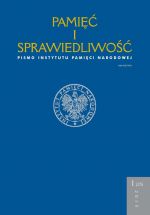Kultury powojenne. Sztuka i komunizm w Krakowie i Lipsku
Postwar Cultures: Art and Communism in Krakow and Leipzig
Author(s): Kyrill KunakhovichSubject(s): History, Cultural history, Social history, Recent History (1900 till today)
Published by: Instytut Pamięci Narodowej
Keywords: Krakow; Leipzig; Sovietization; cultural policy; artists’ unions; reconstruction; World War II; Soviet Bloc
Summary/Abstract: On the morning of January 19, 1945, Dr. Bolesław Drobner arrived as the first representativeof Poland’ s postwar government, charged with a special mission: to resurrect the city’s arts scene and build a new, democratic culture. Six months later a music teacher named Rudolf Hartig took up his new post in Leipzig’ s bullet-riddled City Hall. Hartig was a lifelong communist who took over the city’s Culture Department after the Nazi collapse. Drobner and Hartig became local agents in a transnational project that spanned Eastern Europe: the search for a distinctive socialist culture. This paper investigates what they did at the city level in the first half-decade after World War II. For the East European regimes that came to power after WWII, culture was not a form of entertainment but a tool of governance. Both Drobner and Hartig viewed art as a foundation of the postwar order, capable of bridging social divisions, eradicating fascist residues, and promoting a Marxist worldview. At the same time, the two officials could not simply impose their vision from above: they also had to contend with Soviet advisors and local artists, two groups that had their own notions of what art should look like. The struggle for socialist culture thus reflected broader struggles over political and social control in Eastern Europe.This paper compares cultural reconstruction in Krakow and Leipzig, two of EasternEurope’ s major cities. Looking at them side by side allows us to assess the role Soviet officialsplayed in local affairs and to refine our notion of Sovietization. The postwar program ofsocialist culture was not just a Soviet imposition but rather had deep native roots. Lackingconcrete models or instructions, both Drobner and Hartig relied on prewar conventions, national traditions, and even fascist practice. They pursued policies that seemed to uphold the status quo and therefore provoked little opposition – even from those who opposed leftist parties. Yet these policies also expanded the authority of the state, paving the way for a radical restructuring of the cultural sphere in the years 1949/50. It was widely accepted principles like democratization that enabled the Stalinization of Polish and German culture. The policies that Drobner and Hartig developed proved to have a lasting impact on the Soviet Bloc: they prepared the ground for the Stalinist system, but also preserved local traditions that reemerged when that system collapsed.
Journal: Pamięć i Sprawiedliwość.
- Issue Year: 25/2015
- Issue No: 1
- Page Range: 163-184
- Page Count: 22
- Language: Polish

